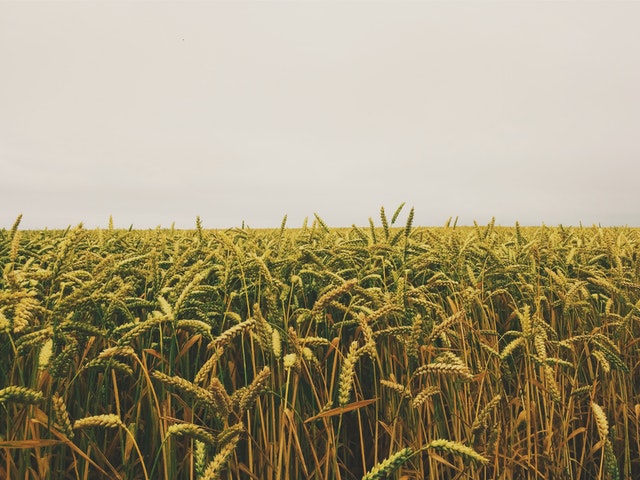
For many years, agriculture has been the driving force of Afghanistan’s economy. Today, although decades of conflict have certainly taken a toll on the sector, agriculture remains one of the country’s key industries. According to data from the World Bank, agriculture employs about 40% of Afghanistan’s total workforce, and anywhere from two-thirds to three-quarters of households derive at least some income from agricultural activities.
While livestock, fruits, nuts, and vegetables are all raised and grown in Afghanistan, the majority of the country’s agricultural efforts are focused on cereals and field crops. Read on to learn about some of the most important crops in Afghanistan and the role they play in Afghan agriculture.
Wheat
Without question, wheat is Afghanistan’s most important crop. It is cultivated in every province (on more than 2.5 million hectares of land), it supplies most Afghans with more than half of their daily calories, and it has great cultural as well as practical significance. Amazingly, some Afghan villages still cultivate the original wheat varieties that were developed thousands of years ago, when ancient humans first settled on the land.
However, despite wheat’s key role in Afghan agriculture, the amount of wheat grown in Afghanistan is still not enough to meet the country’s needs. As a result, Afghanistan imports about 1 million tons of wheat (roughly 25% of its internal demand) every year from neighboring countries. To help combat this challenge of “wheat insecurity,” many organizations are working with Afghan farmers and government agencies to improve wheat cultivation methods, reintroduce endemic wheat varieties that are better suited to local growing conditions, and tap into traditional farming knowledge that can boost wheat production.
Rice
Another vital staple crop in Afghanistan is rice. Grown mainly in the country’s northeastern provinces during the relatively cooler periods of spring (April/May) and fall (October/November), rice is used extensively in Afghan cuisine in dishes such as pulao, a classic dish featuring spiced rice and slow-cooked meat, and sheer berenj, a local rice pudding.
As is the case with wheat, Afghanistan does not currently produce enough rice to meet its domestic needs. This is partly due to the fact that the country does not have many facilities to process the rice it grows. However, thanks to initiatives such as higher-yield seeds and better irrigation practices, this situation is changing.
In early 2020, Afghanistan reported a 9% increase in rice production over the previous year, with 383,000 metric tons of rice produced across 18 provinces. This total represents about two-thirds of internal demand. According to the Ministry of Agriculture, Irrigation, and Livestock, Afghanistan aims to become self-sufficient in terms of rice production within the next few years.
Maize
While maize is an important staple crop in Afghanistan, it is not typically used in the same way as wheat and rice. Instead, it is most often used as food for animals rather than humans, although bread made with maize flour is a common food in some Afghan regions. One of the major advantages of maize is that it can be grown in different ecological zones. As a result, maize is cultivated throughout the country, particularly in the provinces of Paktia and Nangarhar. Maize is mostly an irrigated crop, and it can suffer greatly in periods of drought, especially in areas with underdeveloped irrigation infrastructure.
Barley
Like maize, barley is a major cereal crop that is grown primarily to feed livestock, especially donkeys and horses. Barley cultivation occupies about 310,000 hectares across Afghanistan, or 8-9% of the country’s total cultivated land, making it the third most important crop in terms of area after wheat and maize. A faster-growing, coarser crop than those two cereals, barley is less esteemed, but still fills an important niche in Afghan agriculture. Particularly important is the fact that some varieties of barley can grow better and produce multiple harvests in high-altitude areas with cool conditions and shorter growing seasons. This means that barley can often be cultivated in places where other crops cannot.
Saffron
A very high-value crop, saffron is beginning to attract significant interest from Afghanistan’s agriculture industry. A flower that is used both as a spice and a color dye, saffron is an adaptable and potentially lucrative crop, but it requires a significant amount of labor and care, including harvesting by hand and meticulous post-harvest handling. In Afghanistan, Herat has established itself as the country’s main center for saffron production.
Cotton
Although cotton production has decreased significantly in Afghanistan, it is worth noting that cotton was a key crop for the country prior to the 1980s. Grown in Helmand and Kunduz primarily, as well as a dozen other provinces, cotton received technical assistance and subsidies from the government and supported a parallel industry of cotton and textile mills. Today, Afghanistan still grows some cotton, although yields are very low and many mills are no longer in operation.
